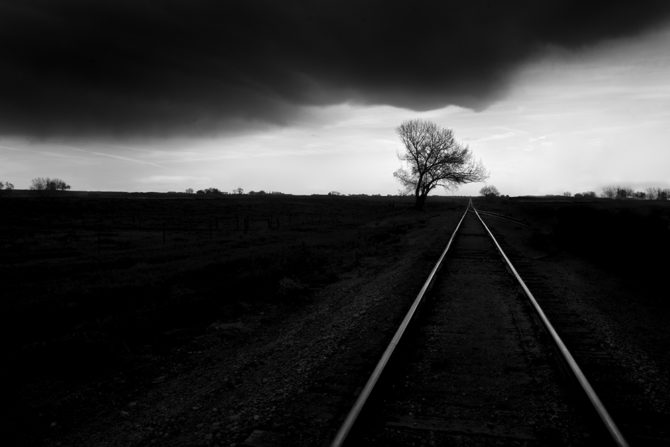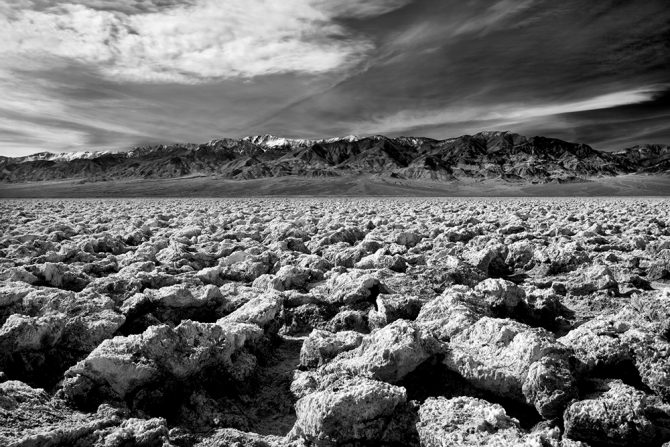Tag: Death Valley
March 31, 2016
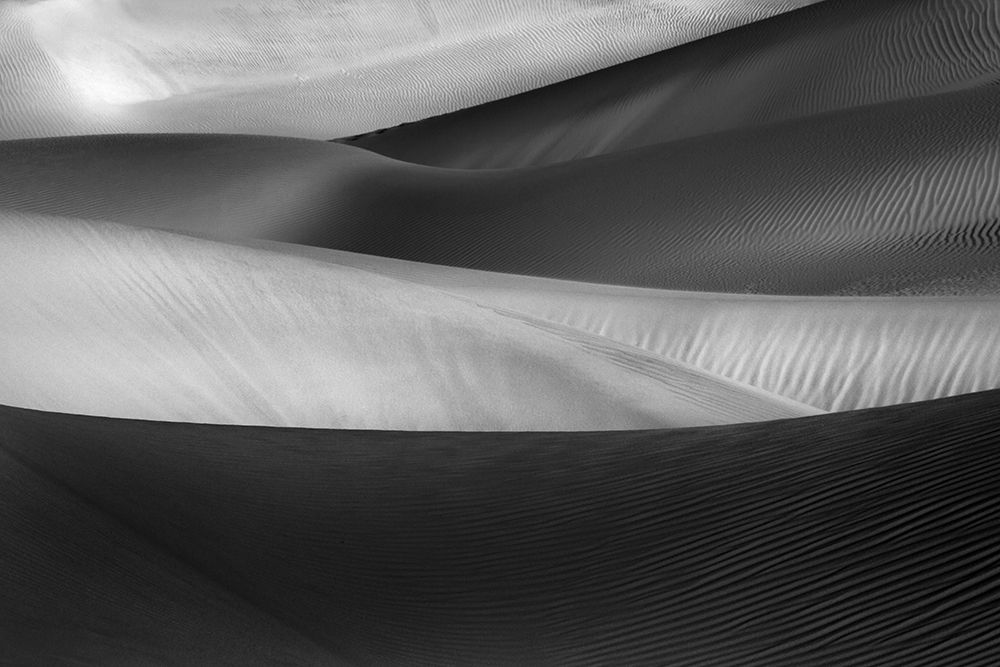
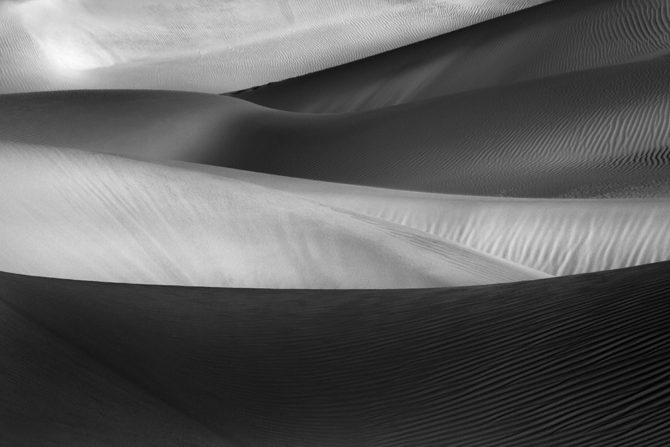
I’ve just released fifty new images from my recent trip to Death Valley, including “Dunes of Nude No. 146” above
They are included in my April 1st, 2016 Newsletter
Are you subscribed? If not, you can sign up here:
http://www.colethompsonphotography.com/NewsletterSignup.htm
Cole
September 10, 2015
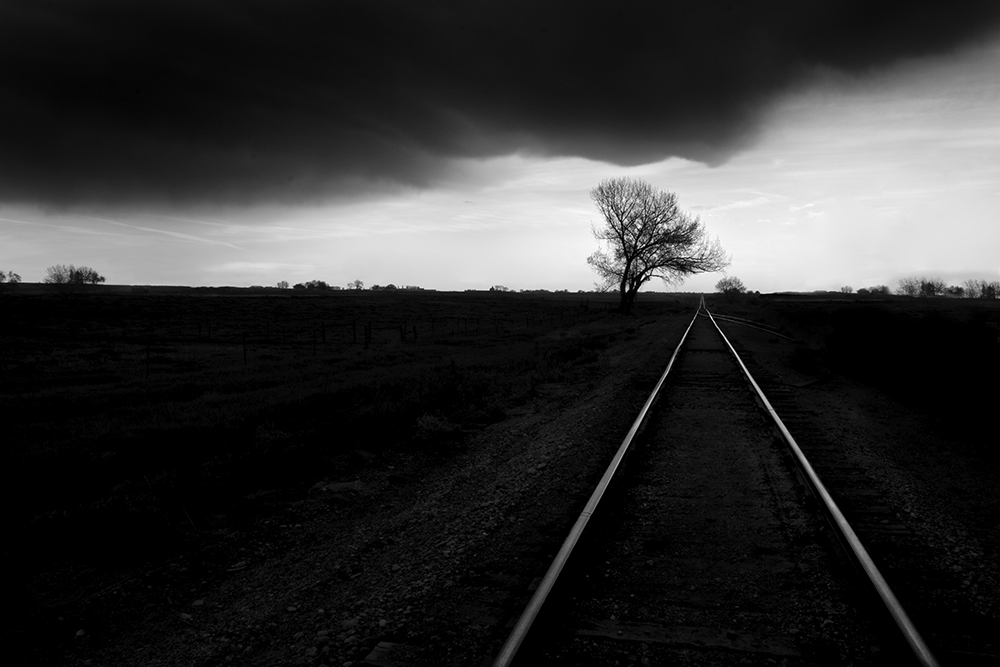
Several years ago a friend of mine, Greg McKean of Master Photo Workshops, shot a video featuring me in Death Valley. And through a series of unfortunate events, we were never able to finish it…until now.
This video is entitled “Discovering Your Vision in Black and White.” It’s a two CD set: one shot in the field and the other at the computer showing my very simple Photoshop techniques including dodging and burning with a pen and tablet.
My biggest concern while shooting was: What if I don’t see any good images, I’ll be documenting myself failing! Fortunately we found a few including “The Road to Nowhere” above. This video will show you how I saw it, shot it and processed it.
To kick start the introduction of this set, Master Photo Workshops is offering a 15% discount between 9/16/2015 and 9/23/2015. Just use the promo code “masterblackandwhite” when ordering. Here’s where you can learn more:
http://masterphotoworkshops.com/catalog/discovering-your-vision
This video an honest representation of what I believe, how I see and the way that I work. I sincerely hope that you will find it interesting and helpful.
Cole

March 7, 2013
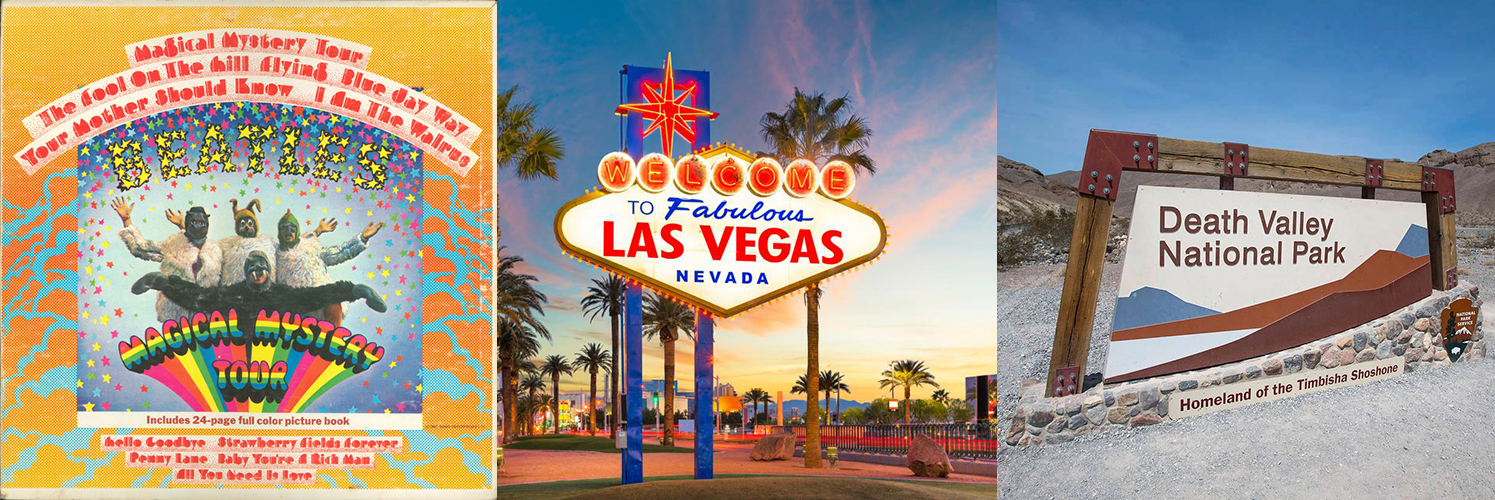
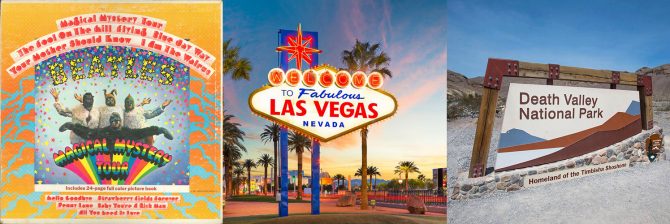
What do The Beatles, Las Vegas, Death Valley and three new images all have in common?
I often cite The Beatles as being one of my photographic inspirations. Not because I grew up with them and love their music, but because I admired how they never “froze in time” in a futile attempt to remain popular by staying the same. Rather, they flaunted conventional wisdom and would change styles at the height of their popularity. As I listen to their music I am in turn inspired to grow, change and to stay fresh by trying new things.
So what has that to do with this story? Well for Christmas my wife surprised me and purchased tickets to The Beatles LOVE by Cirque du Soleil in Las Vegas. The seats could not have been better, the production was unbelievable and the music was…well…it was the Beatles!
We then decided to stay a few extra days in Las Vegas to celebrate our wedding anniversary and Valentine’s Day. The question was what to do with our extra time? We decided to head off to Death Valley so I could show her some of my haunts and so she, a runner, could run at 285 feet below sea level see what it felt like to be Superman!
While she was out running I was very anxious to have another go at Death Valley, but this time capturing my images as RAW files rather than puny JPEG’s! (see my last several posts for the full story). While there I did create three new images.
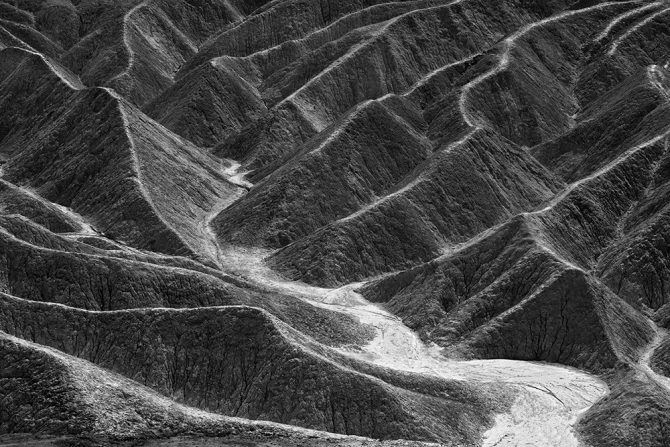
Time No. 4
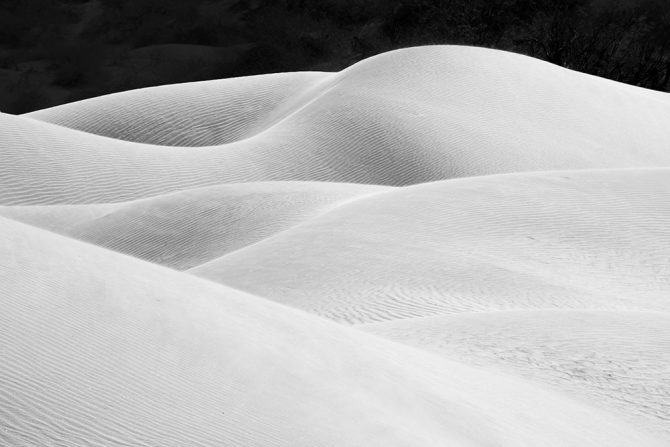
Dunes of Nude No. 85
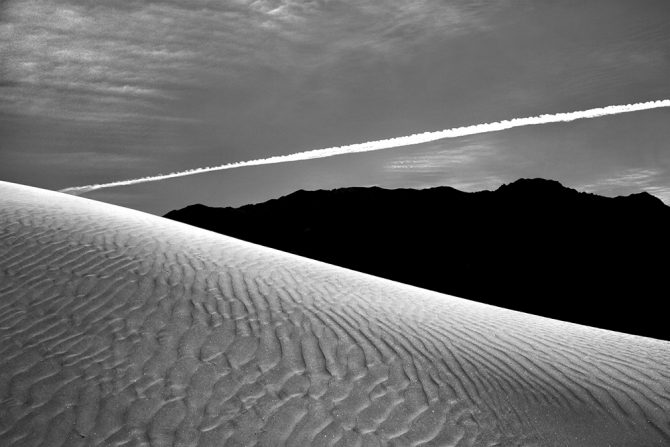
Discordant Lines No. 2
The Beatles, Las Vegas, Death Valley and three new images, how can life get any better than this?
Cole
February 15, 2013
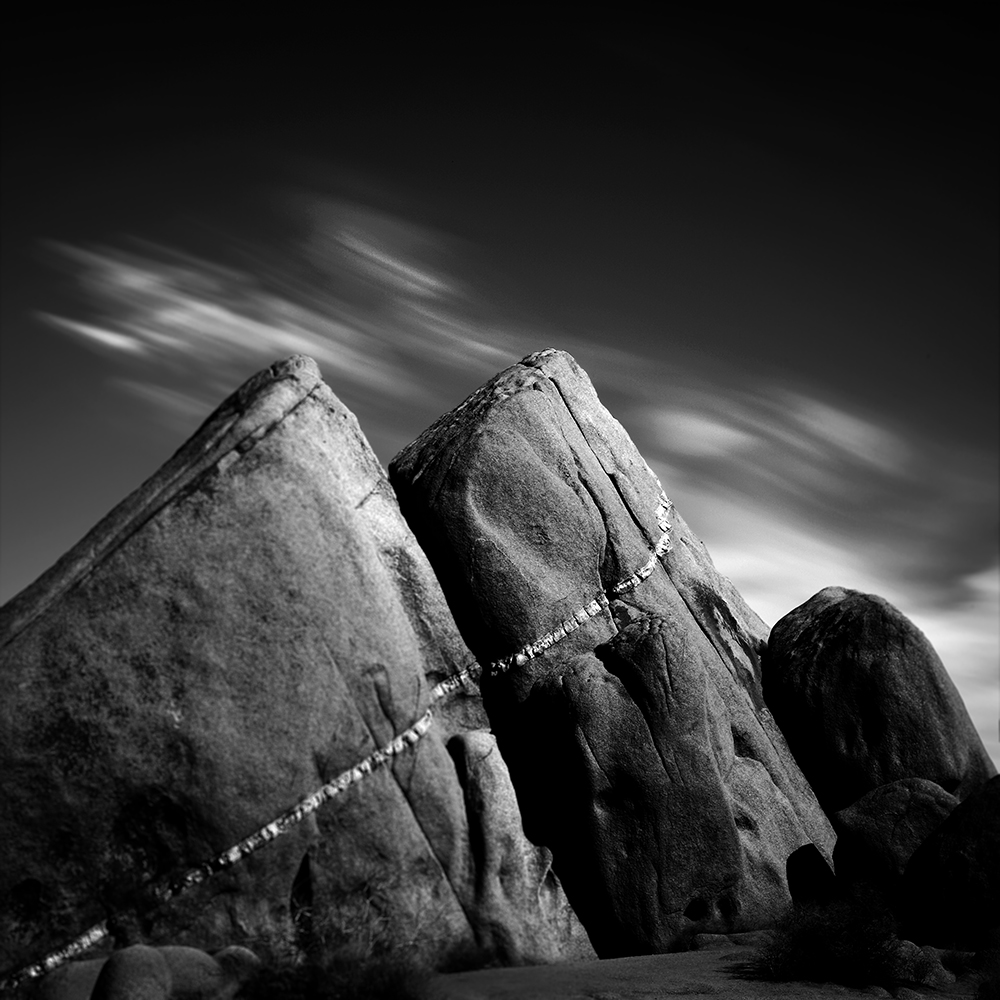
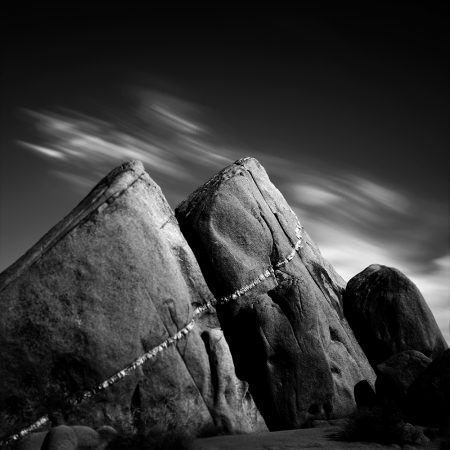
Ancient Stones No. 12 – Accidentally shot as a 8 bit JPEG
Thanks to all who have written to commiserate with me about my disaster last week, and to share your own stories of mistakes made. I should compile them into a book and call it “The Ghosts of Photo-Mistake’s Past.”
And thanks to those who offered technical advice on how to salvage my JPEG’s, because of this advice I was able to save more of my files than I thought possible. I thought I’d share what I found worked best.
To bring everyone up to speed, I accidentally photographed Death Valley with no RAW and only JPEG files. Because I was shooting in Monochrome Mode, the JPEG’s were in black and white and not in color like the RAW files would have been. The reason for this is that when you are shooting in RAW, all of the settings you make to the camera such as the mode, saturation, sharpness and etc, are ignored by the RAW file. However the JPEG file is affected by all of those settings. So because I had JPEG’s files, I was unable to convert them to black and white myself.
Why does this matter? Because much of “my look” comes from this conversion process as I adjust the color channels.
The JPEG files are also more grainy and the grain seems to clump together more than the RAW file. Lastly, the JPEG file is an 8 bit file while the RAW is a 16 bit file. This matters because I do a lot of dodging and burning and an 8 bit file will not produce smooth gradients, it’s subject to banding and posterization.
There is nothing I can do about not having a color file to work with, that ship has sailed. But, there was something I could do about the 8 bit files, I thought I’d simply go into PhotoShop and converted the file to 16 bit. However my friend (and master printer and great photographer) Adrian Davis pointed out that this approach is not ideal and offered a better way.
His suggestion was to use HDR to create a true 16 bit file as opposed to taking a 8 bit JPEG and simply converting it to 16 bits. You do this by making a copy of the original file and then using Photoshop’s HDR to merge together the two identical files which resulted in a file with 16 bits of data. Note: it does not produce that “HDR” look in this process.
Now this did not solve all of my JPEG problems, but at least by having a 16 bit file, I was able to do my dodging and burning on a 16 bit file which provided me with smooth gradients. I compared the JPEG image to the converted 16 bit image and it looks better in a three ways. First there is no banding, second the grain looks smoother and third the edges on high contrast transitions are smoother.
The improvement was enough that with a little extra work, I’ll be able to salvage 10-15 of those “lost” Death Valley images. I’m very happy about this!
So my thanks to all for your support and suggestions, and I hope that my mistake and this technical tip will be beneficial to you.
Cole
P.S. Please take a look at Aline Smithson’s L E N S S C R A T C H entry for 2/14/2013. She invited people from all over the world to submit their self-portraits and there are some amazingly creative images here! But there’s a twist, she tells the story about how I got to know someone who wrote me and how it led to a friendship and an exhibition. She then invites all of the self-portrait artists to contact the person who comes before and after them in the exhibit. Aline’s a pretty clever woman.
February 8, 2013
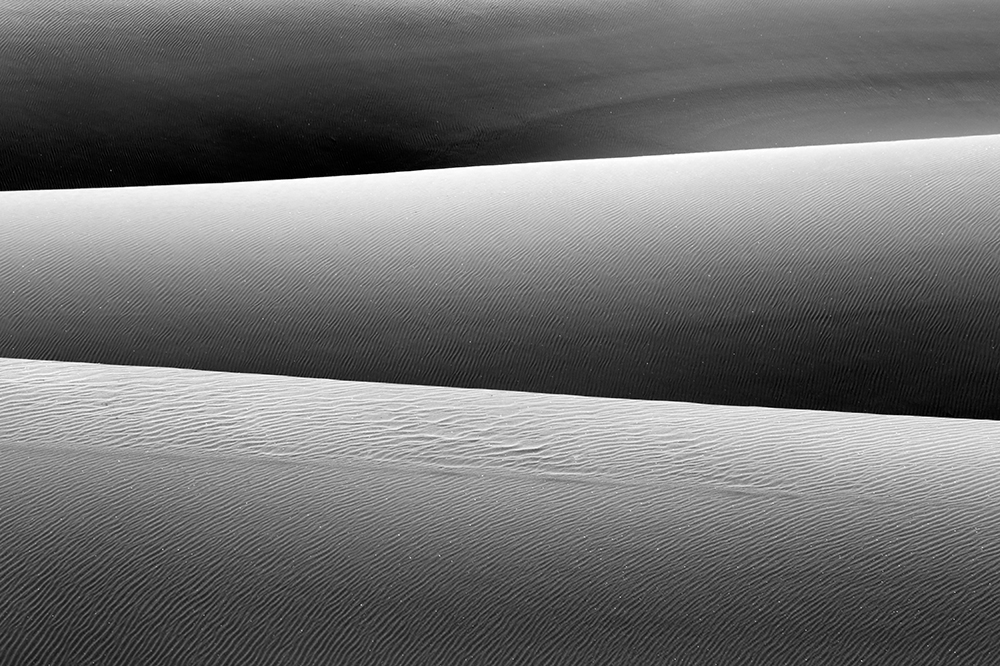
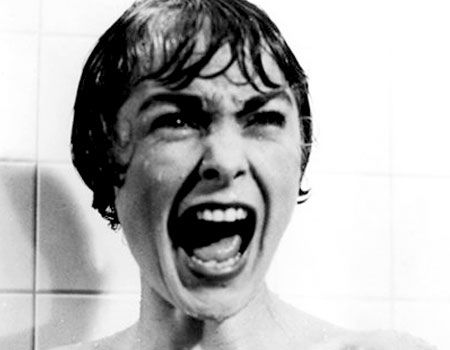
Sunday I arrived home after spending 16 days in Death Valley. It was a fantastic trip; the weather was perfect, it was relaxing and I felt very productive. Each night I’d review my images and the compositions were looking good. However the images had a funny look to them on the camera’s screen, they were flat and dull, but it was a new camera and so I figured that I had the brightness adjustment set a little differently than on my other camera.
When I got home and all caught up with two weeks worth of mail, email and phone messages, I anxiously began processing my images. As I reviewed the thumbnails, the images again looked a little odd, they were very flat. Then I noticed that I was looking at a JPEG, which I thought was okay because I had set my new camera to record in both RAW and JPEG. However as I looked for the RAW files, my heart stopped when I realized they weren’t any. I went back to the CF Card and they weren’t there either.
I could not believe it. I had shot for those entire 16 days and didn’t have a single RAW file to show for it. I went into the camera settings to see how I had set up the camera and sure enough, I had misread the settings and had mistakenly it set to record only in JPEG. I was devastated because as I reviewed the images it appeared to me that I wouldn’t be able to salvage a single one.
The problem was twofold: First the images were recorded in JPEG and were a much lower resolution than the RAW files I normally work with. And second, the files were recorded in B&W which meant that I could not convert them they way I wanted using the color channels. This took much of the creative control from me. As I worked on some of the files I concluded that I wouldn’t be able to use any of them.
That was a very long night for me. I could not stop thinking of all of the mistakes I had made:
Setting up the camera wrong.
Not creating some test images before I took the camera into the field.
Not processing some of the images while on the trip, which would have uncovered the problem.
Not digging deeper into why the images on the camera’s screen looked funny.
I felt pretty foolish and just couldn’t believe that after all of that time, money and shooting, I was coming home empty handed. It was a long sleepless night.
The next day I thought that I’d take another stab at some of the images, perhaps by using some different techniques a few might be salvaged? After working on them for a few hours, it turns out that I might be able to save about five of the images. Not a lot to show for 16 days work, but a lot more than I thought I had last night!

I felt foolish for making such a silly error and thought maybe I’d say nothing about this to anyone and just quietly show the five images, but I then thought better of it. That was pride speaking and the truth is that I messed up and I need to share this experience to keep myself humble and to help others from making the same mistake. This disaster was completely avoidable and I’m grateful that I’ve learned this lesson now, before I travel to Iceland later this year. Can you imagine coming home from Iceland with no images? Now that would have been a tragedy!
So, please learn from my mistake and tuck this experience away. When you get a new camera, test it out thoroughly before you head out on a big photo trip. And if something doesn’t look right, investigate it right then and there until it’s resolved.
Also, after working with these JPEG files and seeing their limitations, I must reinforce my previous recommendation to always shoot in RAW! There is an ENORMOUS difference between RAW and JPEG, and you are handicapping yourself when you work in JPEG.
I’ll be finishing these images over the next several weeks and will introduce them in the next newsletter. In the meantime, the above image is one that I think I’ll be able to salvage.
Cole
January 31, 2013


Isn’t the iPhone incredible? Beautiful 180 degree panoramas created in the field in seconds!
Today I visited the Armagosa sand dunes, near Beatty, NV. I was the only one there and the dunes were pretty clean.
Here’s a short video of my visit.
And a 45 second time-lapse video.
Cole
January 25, 2013
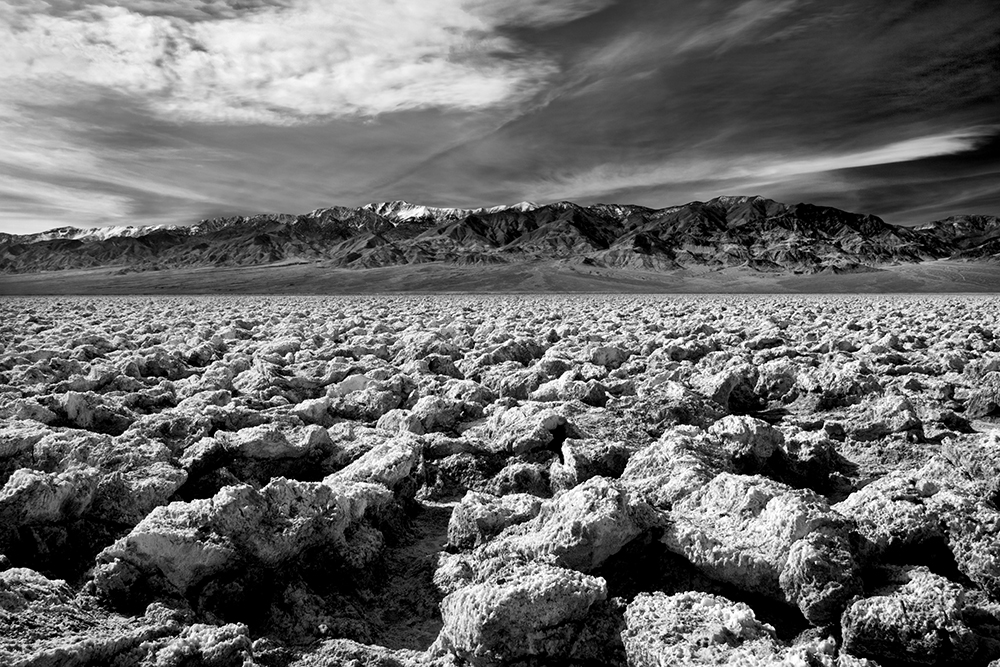
January 18, 2013
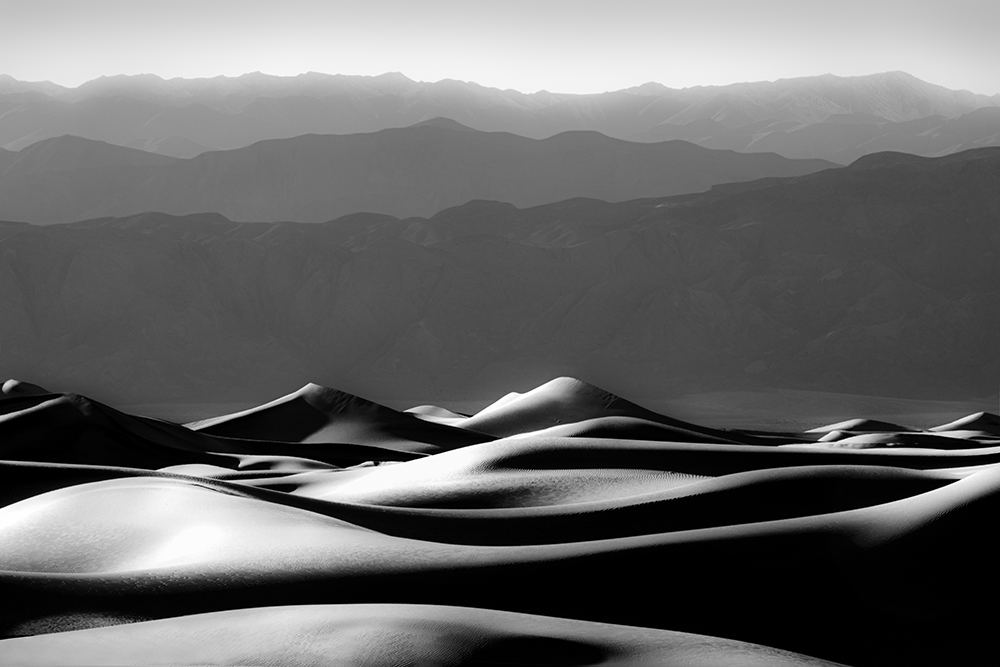
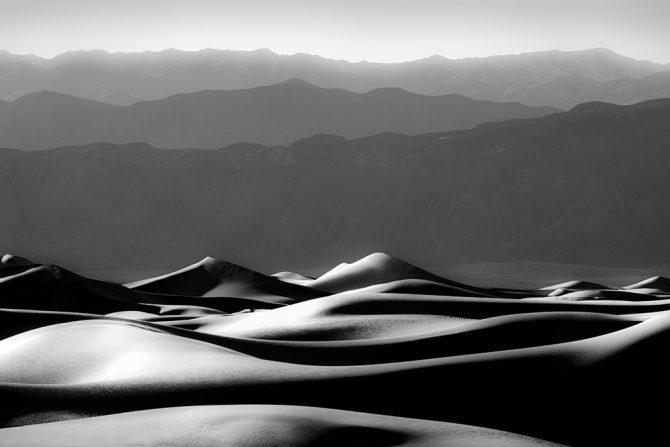
I’m leaving for my annual Death Valley trip in the morning. I’m going for two weeks this year, a little longer than most because I’m also hopping over to L.A. to attend the Auschwitz Liberation Day remembrance at the Simon Wiesenthal Museum of Tolerance.
What will I do for two weeks?
The first thing I’m going to do is enjoy being alone with my thoughts.
My goal is to clear my head of all the day to day clutter that keeps me preoccupied with relatively unimportant stuff.
I hope to continue on my quest to “see differently.” Not differently from everyone else, but differently from myself.
Would I love to come home with a dozen of good images? Yes, but I’d rather come home with a single great one.
One that I am in love with.
One that I am proud of.
That’s not too much to hope for, is it?
Cole
August 31, 2012
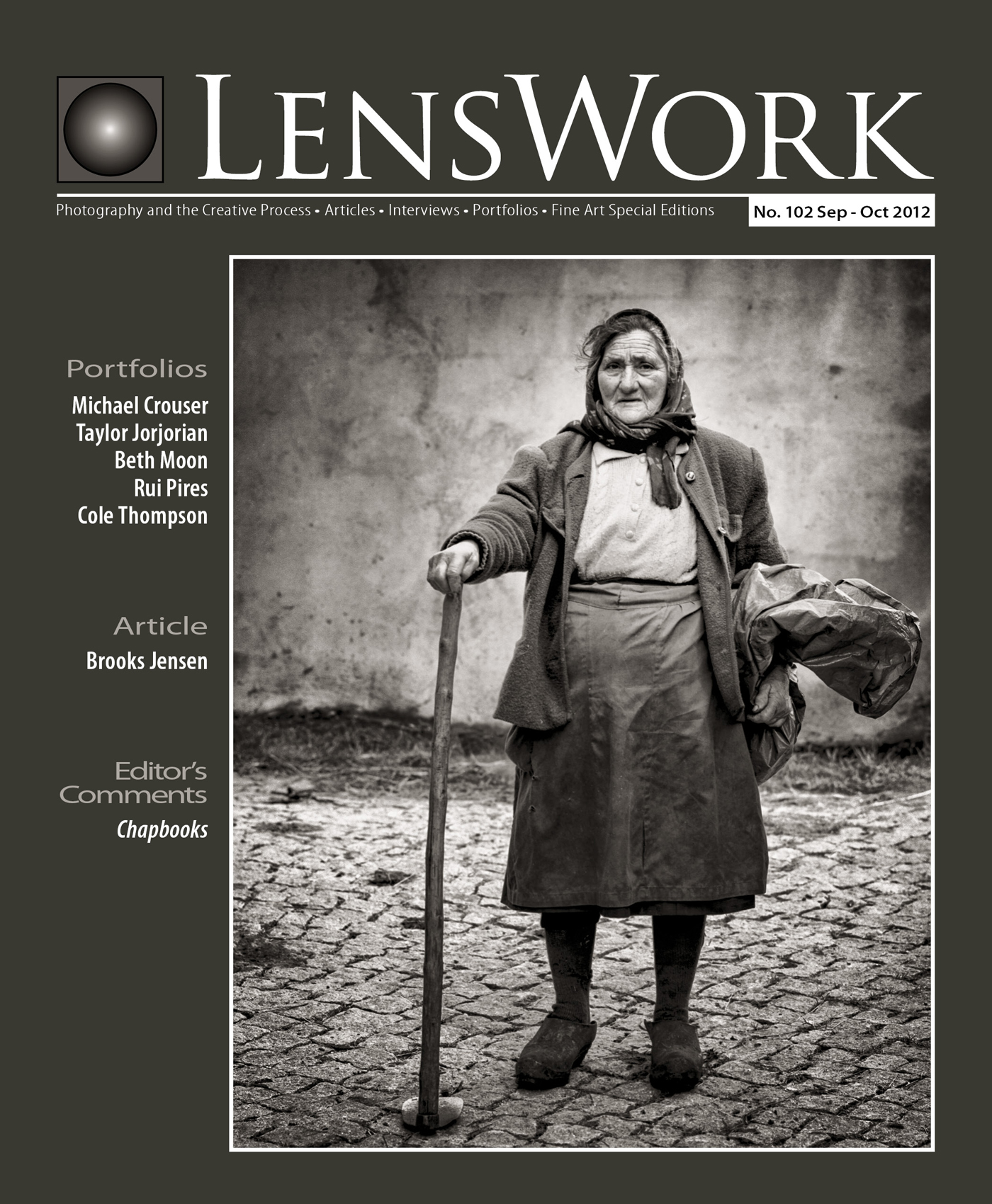
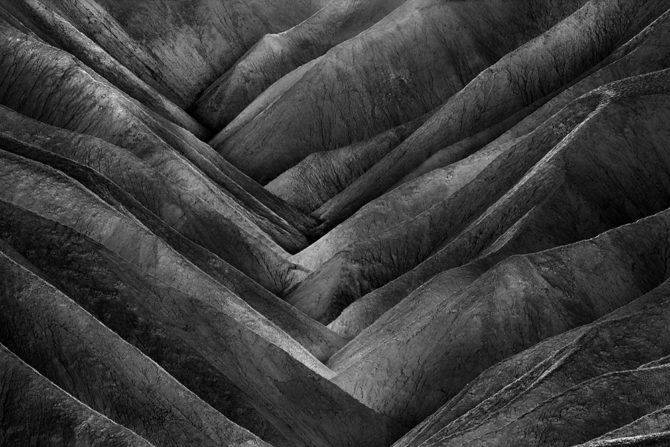
My portfolio “Death Valley: Where Time Stands Still” is featured in the current issue of LensWork. It is always an honor to be featured here.
If you’ve never seen a printed copy of LensWork, then you are missing out on one of the finest printed publications in the world. The quality of their duotone printing surpasses most of the photo books I own and the quality of their featured photographers is consistently high. And then there is LensWork Extended, a DVD with additional content such as audio interviews, additional images, video and even…dare I utter the word…color!
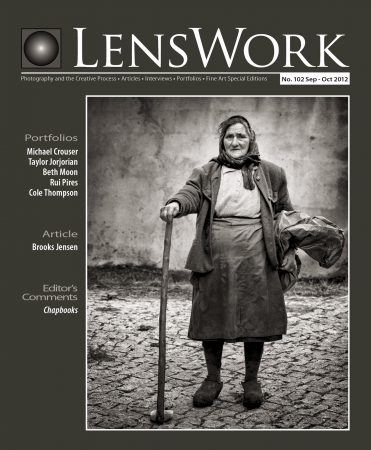
Something else I love about LensWork are the writings of editor Brooks Jensen. I have always liked his out-of-the-mainstream views and appreciated his common-sense wisdom about art and photography (even though we differ in opinion on “Photographic Celibacy!“)
So far I have had these portfolios featured in LensWork and LensWork Extended:
- Grain Silos
- Ceiling Lamps
- The Ghosts of Auschwitz-Birkenau
- Death Valley: Where Time Stands Still
Unfortunately you can no longer purchase LensWork on the newsstands, however you can purchase a copy or subscribe here:
http://www.lenswork.com/previewpages/lw102/lw102preview.html
If you were going to read just one photo publication, I’d suggest that you get rid of the ones that focus on equipment and subscribe to LensWork that focuses on art. At $39 a year, it is a steal and I’m not sure how Brooks Jensen can afford to do it!
Cole
August 23, 2012
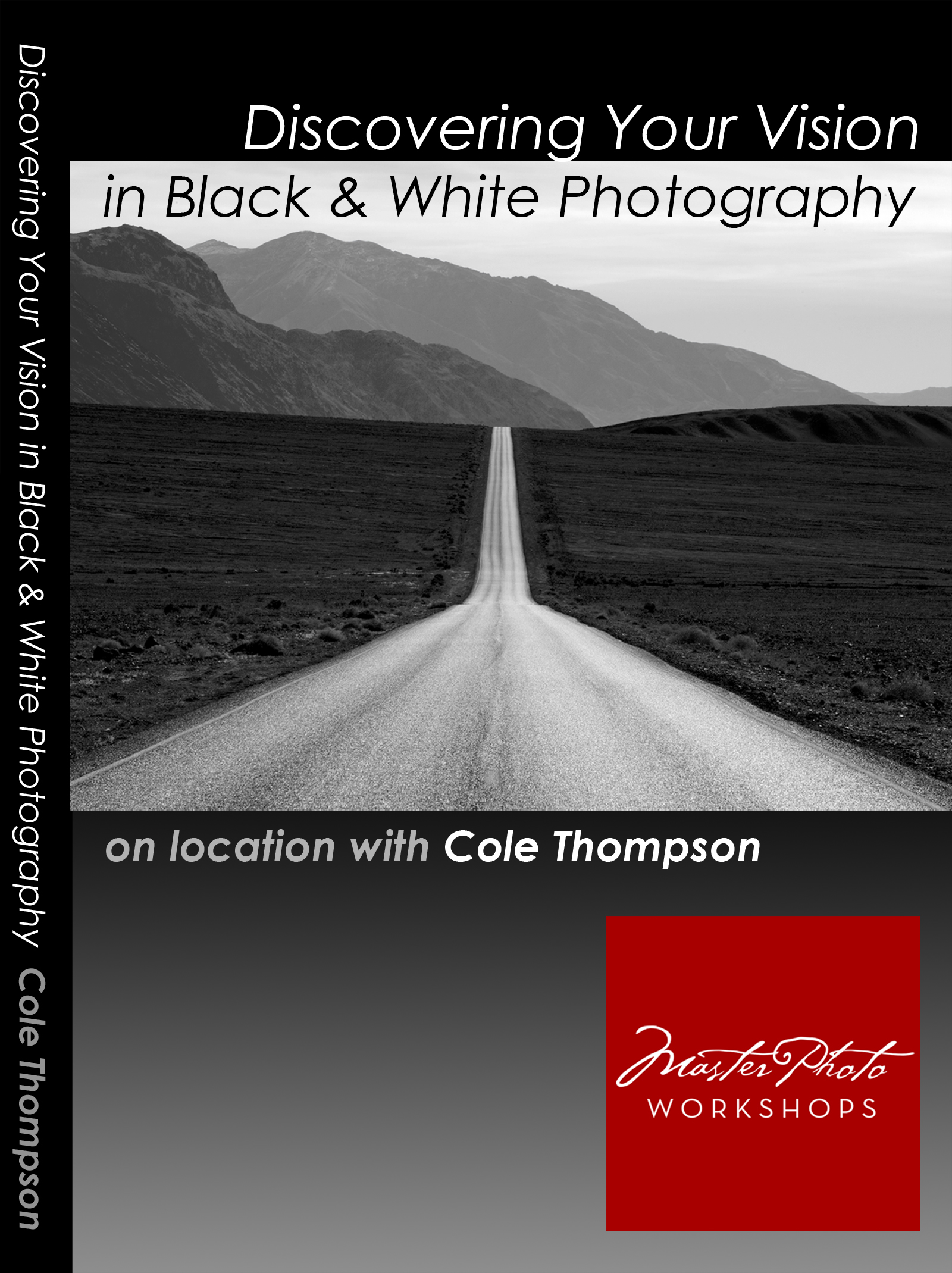
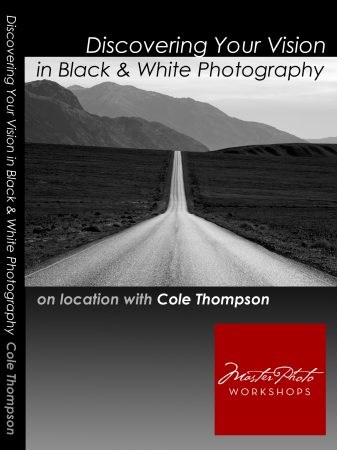

Here’s a new video featuring my Death Valley images. They will be appearing somewhere special in the near future.
Here’s a hint; it’s a black and white publication.
Cole

